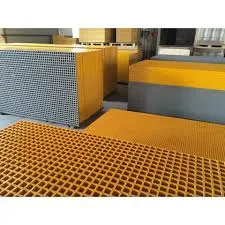
-
 Afrikaans
Afrikaans -
 Albanian
Albanian -
 Amharic
Amharic -
 Arabic
Arabic -
 Armenian
Armenian -
 Azerbaijani
Azerbaijani -
 Basque
Basque -
 Belarusian
Belarusian -
 Bengali
Bengali -
 Bosnian
Bosnian -
 Bulgarian
Bulgarian -
 Catalan
Catalan -
 Cebuano
Cebuano -
 China
China -
 China (Taiwan)
China (Taiwan) -
 Corsican
Corsican -
 Croatian
Croatian -
 Czech
Czech -
 Danish
Danish -
 Dutch
Dutch -
 English
English -
 Esperanto
Esperanto -
 Estonian
Estonian -
 Finnish
Finnish -
 French
French -
 Frisian
Frisian -
 Galician
Galician -
 Georgian
Georgian -
 German
German -
 Greek
Greek -
 Gujarati
Gujarati -
 Haitian Creole
Haitian Creole -
 hausa
hausa -
 hawaiian
hawaiian -
 Hebrew
Hebrew -
 Hindi
Hindi -
 Miao
Miao -
 Hungarian
Hungarian -
 Icelandic
Icelandic -
 igbo
igbo -
 Indonesian
Indonesian -
 irish
irish -
 Italian
Italian -
 Japanese
Japanese -
 Javanese
Javanese -
 Kannada
Kannada -
 kazakh
kazakh -
 Khmer
Khmer -
 Rwandese
Rwandese -
 Korean
Korean -
 Kurdish
Kurdish -
 Kyrgyz
Kyrgyz -
 Lao
Lao -
 Latin
Latin -
 Latvian
Latvian -
 Lithuanian
Lithuanian -
 Luxembourgish
Luxembourgish -
 Macedonian
Macedonian -
 Malgashi
Malgashi -
 Malay
Malay -
 Malayalam
Malayalam -
 Maltese
Maltese -
 Maori
Maori -
 Marathi
Marathi -
 Mongolian
Mongolian -
 Myanmar
Myanmar -
 Nepali
Nepali -
 Norwegian
Norwegian -
 Norwegian
Norwegian -
 Occitan
Occitan -
 Pashto
Pashto -
 Persian
Persian -
 Polish
Polish -
 Portuguese
Portuguese -
 Punjabi
Punjabi -
 Romanian
Romanian -
 Russian
Russian -
 Samoan
Samoan -
 Scottish Gaelic
Scottish Gaelic -
 Serbian
Serbian -
 Sesotho
Sesotho -
 Shona
Shona -
 Sindhi
Sindhi -
 Sinhala
Sinhala -
 Slovak
Slovak -
 Slovenian
Slovenian -
 Somali
Somali -
 Spanish
Spanish -
 Sundanese
Sundanese -
 Swahili
Swahili -
 Swedish
Swedish -
 Tagalog
Tagalog -
 Tajik
Tajik -
 Tamil
Tamil -
 Tatar
Tatar -
 Telugu
Telugu -
 Thai
Thai -
 Turkish
Turkish -
 Turkmen
Turkmen -
 Ukrainian
Ukrainian -
 Urdu
Urdu -
 Uighur
Uighur -
 Uzbek
Uzbek -
 Vietnamese
Vietnamese -
 Welsh
Welsh -
 Bantu
Bantu -
 Yiddish
Yiddish -
 Yoruba
Yoruba -
 Zulu
Zulu
fiberglass pipes and fittings for ship building
Fiberglass Pipes and Fittings for Shipbuilding A Comprehensive Overview
The maritime industry has long been at the forefront of technological advancement, constantly seeking innovative materials to enhance the efficiency, durability, and safety of vessels. One such material that has gained considerable prominence in shipbuilding is fiberglass, particularly in the form of fiberglass pipes and fittings. These components offer a multitude of benefits, making them an ideal choice for various ship systems.
Advantages of Fiberglass Pipes
1. Corrosion Resistance One of the most significant advantages of fiberglass pipes is their resistance to corrosion. Traditional materials such as steel and aluminum are highly susceptible to the harsh marine environment, where exposure to saltwater can lead to rapid deterioration. Fiberglass, on the other hand, does not rust or corrode, making it a more durable solution for marine applications.
2. Lightweight and Strong Fiberglass pipes are notably lighter than their metallic counterparts, which can result in significant weight savings for vessels. This reduction in weight contributes to improved fuel efficiency, as ships can transport more cargo without exceeding weight limits. Despite their lightness, fiberglass pipes maintain impressive strength, able to withstand high pressures and mechanical stresses.
3. Thermal Insulation Another important characteristic of fiberglass is its thermal insulating properties. It helps in maintaining the desired temperature of fluids, making it suitable for shipboard systems carrying hot or cold substances. This can lead to increased energy efficiency, as less energy is required to maintain specific temperature levels.
4. Ease of Installation The installation of fiberglass pipes and fittings is generally simpler when compared to traditional materials. Their lightweight nature makes transportation and handling easier, while their modular design allows for quick assembly. This translates into reduced labor costs and time savings during the construction and maintenance phases of shipbuilding.
5. Chemical Resistance Ships often encounter a wide range of chemicals, from fuel oils to cleaning agents. Fiberglass pipes offer exceptional resistance to many of these substances, ensuring that the integrity of the piping system is maintained over time. This chemical resistance is crucial in preventing leaks and ensuring the overall safety of the vessel.
fiberglass pipes and fittings for ship building

Applications in Shipbuilding
Fiberglass pipes and fittings find various applications within the shipbuilding industry, including
- Ballast Systems Effective ballast systems are essential for the stability of ships. The lightweight and corrosion-resistant properties of fiberglass pipes make them ideal for ballast water management systems.
- Freshwater and Wastewater Systems With their ability to resist corrosion and chemical attack, fiberglass pipes are increasingly used in systems designed for transporting freshwater and treating wastewater.
- Cooling and Heating Systems The thermal insulation capabilities of fiberglass allow for effective temperature management in cooling and heating systems onboard ships, making it a preferred choice in engine cooling setups.
- Fuel Transport The integrity and safety of fuel systems are paramount in shipbuilding. Fiberglass pipes ensure secure transport of fuels without the risk of leaks associated with metal pipes.
Conclusion
In summary, fiberglass pipes and fittings represent a significant advancement in shipbuilding materials, combining lightweight attributes with exceptional durability, corrosion resistance, and ease of installation. As the maritime industry continues to innovate and seek out sustainable solutions, the adoption of fiberglass components is likely to grow. They not only contribute to the overall efficiency and safety of ships but also align with environmental standards that are increasingly becoming a priority globally. With advancements in technology and material science, the future of shipbuilding will undoubtedly be shaped by the integration of fiberglass solutions, making vessels more efficient and sustainable in an ever-challenging marine environment.









